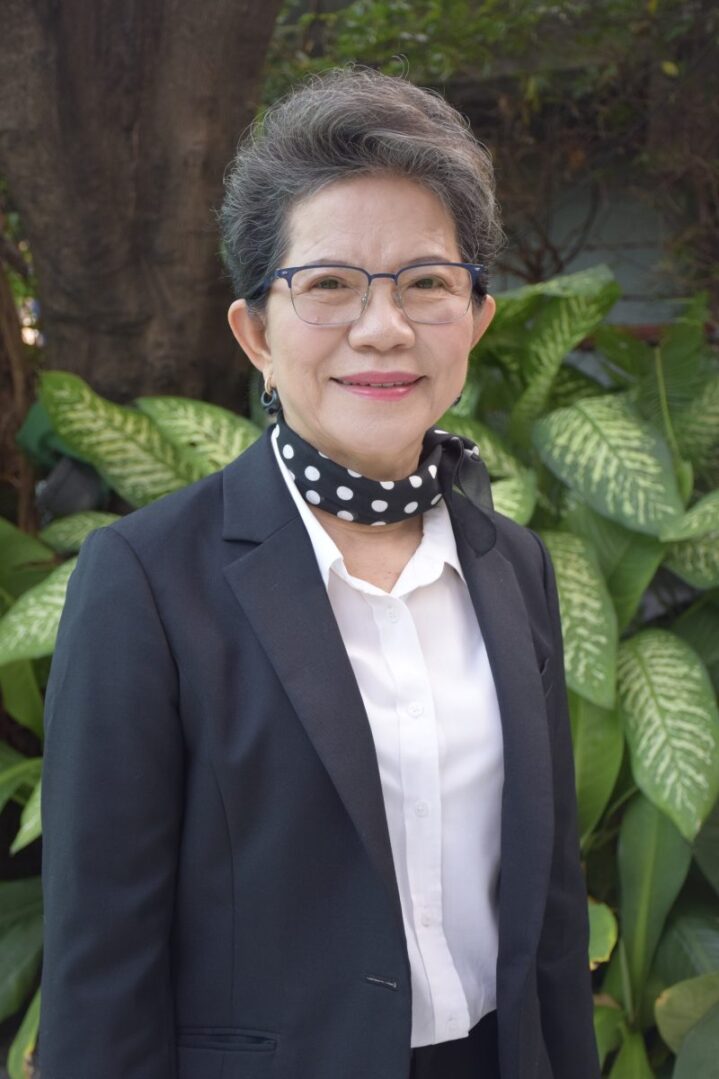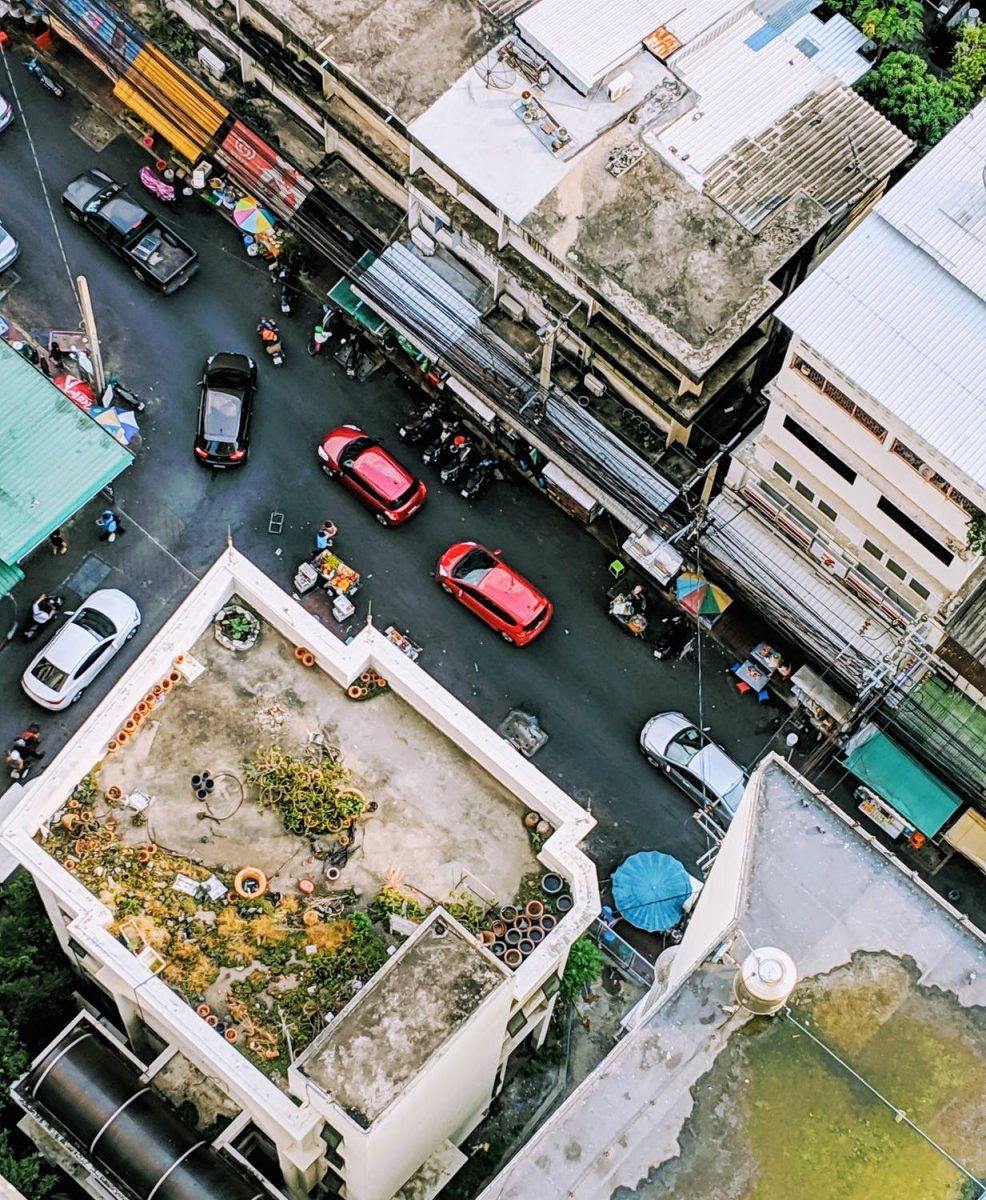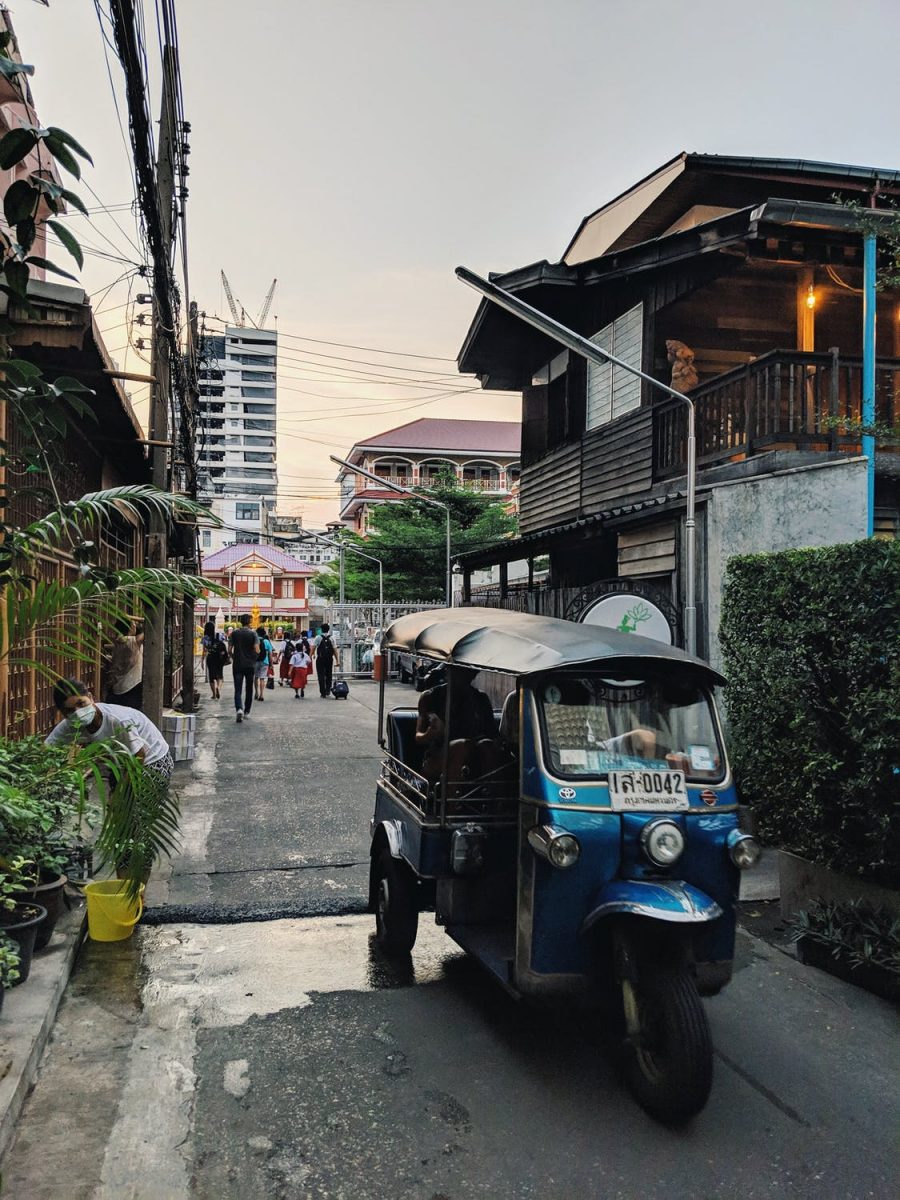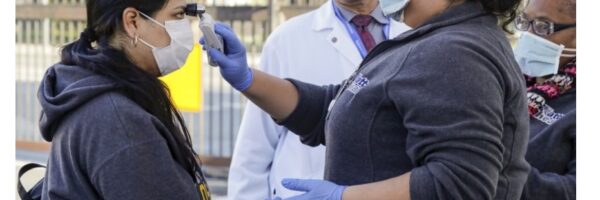
Duang Prateep Foundation
The first in our series of articles in Thailand on Unsung heroes…
I left the Khlong Toei slum with two things that are connected in a surprising way:
- A sack of fresh mushrooms grown by senior citizens
- Having witnessed the closest thing to a saint that I think I will ever see, Khun Prateep
Ungsongtham Hata.
As I write this, it will be impossible to put into words what I felt walking around on that Tuesday morning with Prateep. I experienced the full range of emotions; I was brought to tears while simultaneously feeling a sense of hope from her gentle touch on my shoulder that I have never experienced in my life.
In the 1960s there was a tiny girl who lived in the slums near the port, the same slums that still exist today, nearly 60 years later. Her name was Prateep. She had 4 years of primary school education and she worked at the port earning 12B per day, and a whopping 36B at night. Her main task, along with many other children, was scraping the rust off of the enormous ships that came to dock in the ports of Bangkok and then exposing themselves to noxious fumes while repainting them. One day, the unthinkable happened. Scaffolding that the children were working from collapsed and threw them to the ground with the pipes crashing down on top of them. Prateep watched as blood poured from the fractured skull of one of her friends. “He was twisting and shaking in agony like a fish that had been hit on the head. He was paralysed”. There was no justice, no welfare. No one stood up for the boy for fear of losing their own pittance of a salary. In speaking with her, this memory is clearly as fresh in Prateep’s mind as if it were yesterday.
At 12 years old, she started saving her meagre wages to pay for night school so that she could give herself more education. After surviving the docks and completing her secondary education, she was awarded a place at a teachers college. She continued to work and take classes at night and 10 years later, she graduated with a teaching license. She recognised, at a very early age, that education could transform lives. “If poor people have no education, they can’t protect themselves. They have no voice.” After making sure to get herself a proper education and escaping the slum, she could have easily walked away and never looked back, but instead, she decided to do exactly the opposite.
Prateep knew that there were no schools for slum children as many of them have no identity cards so with Mae Kru Mingporn, she decided to open one by herself, at her home in 1968. It was a 1B a day school that aimed to simply teach children to read and write. Some families couldn’t even afford that but Prateep didn’t turn them away. Many of the students who attended her school lacked the paperwork to prove their citizenship which made it impossible for them to enrol in Thai government school. This left the children and families in limbo and almost ensured their tether to poverty.
It soon became very apparent that rather than focusing on formal education, most of her time was spent helping families and children simply cope with the abysmal day-to-day conditions of living in the slum. Prateep was a trusted voice for many of the destitute families so her role transitioned from a passionate educator into a community leader. The school became a gathering place for people in the community to voice their concerns in desperate hope that someone would listen and help them. Naturally, this assembly of the poor attracted the government who then shut down the 1B a day school citing lack of permits and subsequently demolished that section of the slum in order for the port to expand.
That didn’t stop the Khun Prateep “We are always afraid. If we are all afraid then who amongst us will be brave?” Prateep based her funding plan on the simple idea that the more we give, the more we receive. The mantra has served the Duang Prateep Foundation for nearly 40 years. In 1978, when Prateep was 26 years old she achieved a major milestone. She won a financial prize from the Magsaysay awards in the Philippines. It amounted to roughly 20,000USD, all of which she donated to start the Foundation. When she announced that it would all go to the children directly rather than investing it and using the interest to fund projects (as was common for similar ventures at the time), people from all walks of life started pouring money into her efforts, more than tripling her initial donation.
Around the same time, her re-established 1B school was recognised by the Bangkok Metropolitan Association (BMA) as a proper school. Prateep became the principal of her officially established school. After becoming principal, she determined that anyone with an understanding of how a BMA school runs could do the job but the job of working directly with poor families was much more complicated and required someone with intimate knowledge of the situation. She stepped down as principal and became Secretary General of the Duang Prateep Foundation.
In the first 5 years they:
- Opened 15 slum child development centres
- Worked with the Central Registration Department to get proper documents for the nationless children
- Established scholarship programmes
- Lunch programmes
- Helping evicted communities (the port owns the slum land and can act at will to demolish sections)
- Dealt with drug problems
- Requested water and electricity
For the past 40 years, they have continued doing all of these activities and more. Much, much more.
On a cool Tuesday morning in January, Prateep generously picked me up and took me to her school. I have lived in Bangkok for 7 years but like many Thai expats and Thais included, I have never ventured into the slums. When we were dropped off at the doorstep of her elementary school, I could hardly believe a school so welcoming, organised and simply happy could exist at the heart of a place that is plagued with desperation and hardship. Prateep held my hand as she escorted me into the English class where volunteers were teaching a kindergarten class. The smiles, there were so, so many smiles. My eyes started to tear up. Prateep gracefully floated away from me and straight to the kids, especially the naughty boys who she soothed with a soft hand on their backs and a smiling ‘sawatdee ka’.
The kids lined up and marched their way out of English class and Prateep guided me around to some of the general classes. The thing that struck me most about the school was how open it was. The classrooms were essentially three walled with the fourth ‘wall’ facing a courtyard and a playground that would be a dream for any child. I commented on the layout and Prateep explained that it was designed like that on purpose. In the slum, everything is so dark and enclosed. At the school the kids can breathe. They can see the sky and look more than 10 feet without seeing a wall.
The school uses a Montessori method so as we ambled through the halls, the kids were doing all sorts of different tasks. But one thing was consistent, their affection for Ajarn Prateep. The kids were drawn to her like a magnet and she gave each and every one of them genuine and tender attention as if they were the only person in the world. It was hard to imagine that some of these kids who were in their little uniforms singing, dancing, doing puzzles, matching shapes, drawing and smiling with the purest happiness in the world would, at the end of the day, go back to a home where they may not have dinner, or someone would be passed out from drugs on their floor, or perhaps no one would be there at all. I couldn’t help but be overcome with emotion as I placed my hands on the railing facing the courtyard and dried my eyes before turning back around to a little tyke missing a couple front teeth tugging on my shirt and wanting to show me her class photo.
After touring the school, which is all I thought we were doing that day, Prateep took me into the housing area nearby the school. 5 steps in, I could immediately understand why she designed her school the way she did; it was an utterly claustrophobic maze. We strolled down the tight pathways with each passerby greeting Prateep and her taking a minute to check on them and see how they were doing. She truly knew everyone. She showed me the houses her foundation had built (another one of her ventures) and took a solid 10 minutes to hear the grievances of a woman with a pushcart talking about how there is a house on the verge of collapse and they desperately need help.

Our final stop was for lunch at the senior/community centre, also run and financed by the Duang Prateep Foundation. Here’s where the mushrooms finally enter the story. The staff had prepared a delicious lunch for us which included stir-fried mushrooms grown by the senior citizens. It’s a project that helps to give them purpose and a reason to stay involved with the community as well as provide a healthy, inexpensive protein source for their families. I am not a mushroom fan, but as a sign of politeness and because of what I felt like after what I had seen that day, I should never be picky about food placed in front of me, I ate them. They were absolutely delicious. I had seconds. As we said our farewells, Prateep handed me a huge bag of mushrooms and a book and thanked me. I was speechless.
So, what is in store for the future of the Duang Prateep Foundation? Prateep once said, “Once there are no more poor people, the job of the foundation will end.” We can only hope that the foundation will shut its doors someday for the right reasons. For now, just like its namesake angel, the foundation is a beacon of hope, a calming voice in a time of chaos and a gentle touch on your arm that makes you realise what is actually important.
Khun Prateep is currently in yet another David and Goliath battle with the Port Authority of Bangkok who are pressing to remove the ’squatters’ as they call them that have made a home over the years in and around the Klong Toei area.
Technically of course these poor disadvantaged people are squatters on private land, but does Thailand really need yet another luxury shopping mall on the banks of the Chao Phraya River?
The following article is reprinted from Khun Prateep is currently in yet another David and Goliath battle with the Port Authority of Bangkok who are pressing to remove the ’squatters’ as they call them that have made a home over the years in and around the Klongtoey area.
Technically of course these poor disadvantaged people are squatters on private land but does Thailand really need yet another luxury shopping mall on the banks of the Chao Phraya River?
The following article is reprinted from Coconuts Thailand.
One of Bangkok’s 50 districts, Khlong Toei, or “pandan canal,” was named for the plant that grew along its banks.
The Port Authority owns the land where the community is located, and many consider that fact the end of discussion when it comes to evicting upward of 150,000 people living there. But that concept of land ownership is a relatively modern development established after the community was settled.
When the Siamese capital moved from Ayutthaya to Bangkok over two centuries ago, all land was owned by the King, who could lend, grant or gift it for use. Many of today’s neighbourhoods and streets began as such royal gifts.
Up through the mid 20th century, Thailand had abundant land and scarce labour, and people were allowed to take possession of unused land by cultivating it, wrote David Feeny, professor emeritus of economics at Canada’s McMaster University.
Ownership rights based on use and exploitation were left intact when modern property laws involving titles and deeds were written in 1954, just as families were encouraged to settle around the Bangkok Port, which had opened a few years prior between two sharp bends of the Chao Phraya River.
Thailand’s rice boom led to the port’s construction being funded by the World Bank, and nearly all trade passed through it for decades. But even a large expansion couldn’t keep pace with demand, and the opening of a deep-sea port Southeast of the capital at Laem Chabang heralded its decline.
Those who settled there to work the docks included immigrants from Laos, Cambodia, Vietnam and what was then Burma. They formed close-knit supportive neighbourhoods, according to research by the Worcester Polytechnic Institute.
Today’s campaign to erase the slum, as one transport official put it, is the latest in a cycle almost as old as the community.
Three years after land-ownership laws were written, in 1957, the Port Authority sought to force out the dwellings to build a market and other buildings. It succeeded in relocating over 100 households from what’s called the Lock 6 area to Lock 12. The residents then organised against the expulsions, petitioning the Prime Minister and physically blocking demolition of homes.
Similar efforts were pushed back in the 1970s and 1980s. In 1983, residents departed voluntarily from some land for the port to develop under a 20-year land sharing agreement under which claims of both landowner and settlers were recognised, according to Global Perspectives on the History of Squatting.
Many living there today remember what happened when a forced relocation failed following a 1991 chemical fire that left thousands sick and homeless. Many were rehoused about 30kms away in government projects. But they couldn’t find work and most eventually returned to living in Khlong Toei.

It’s easy, he said, for those who’ve never experienced such poverty to say, “Oh they’re getting free land and they’re not happy about it?” But that betrays poor understanding of the basic realities faced by the poor, community organiser Garat “Duang” Peumrab said in August.
Today, there are nearly 30 communities living legally and illegally on the 500 rai (80 hectares) of land, according to Penwadi Sangchan, manager of the Duang Prateep Foundation, an NGO that has played a key role in negotiations.
Evictions and campaigns against “encroachment” took on renewed fervour under the military government which seized power in 2014. With that, a new appreciation for waterfront real estate brought a particular zeal for redeveloping the Chao Phraya River. Many long-time riverside residents were cleared out and an unpopular plan to build boardwalks along its banks continues to be revived.
Beginning in late 2018, the Port Authority, an agency supervised by the Transport Ministry, began flaunting splashy plans to redevelop Khlong Toei into a riverside mall similar to the newly opened IconSiam, a luxury mall frequented by tourists.
Reprinted from Coconuts Bangkok Thailand’s leading news online website.
Should you wish to assist those less fortunate than you and make a donation to the Duang Prateep Foundation you can do so by sending a donation to the following:

Bank: KASIKORNBANK
Branch: Klong Toey
Address: 1262 Rama 4 Road, Klong Toey, Bangkok 10110, Thailand
SWIFT: KASITHBK
A/c No: 017-2-06336-5
A/c Name: Duang Prateep Foundation
(Once the bank transfer has been completed, please send a copy of the transfer documentation so that they can easily trace your donation at their bank and remit a receipt promptly).
People wishing to volunteer in the English Programme should contact:
Ms. Susanne Joachim (English Programme Coordinator)
Email: [email protected]
Thank you again for your interest in the work of the Duang Prateep Foundation.





